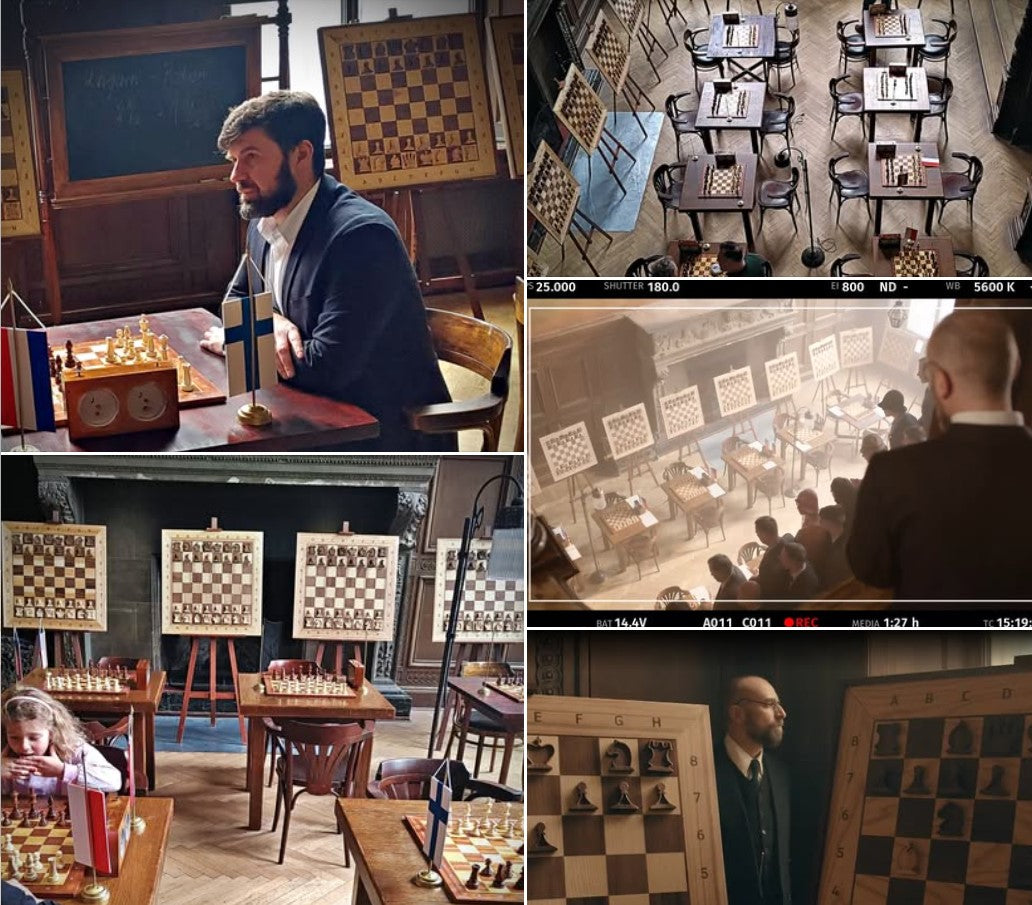The Journey Is the Reward
I never planned to become a craftsman. I just wanted to build the most beautiful wall-mounted chessboard I could: solid wood, wooden pieces, magnets—an object you want to touch and actually play on. I assumed the rest would somehow fall into place.
Then the pandemic arrived and moved the pieces for me.
When an Engineer Steps Off the Rails
For years I worked with engineering teams—as an engineer—inside my own small company. When the world stopped, contracts cracked. I no longer wanted to live inside spreadsheets, chase payments, and negotiate endlessly. Instead of banging my head against the wall, I stepped away.
I had to close the company and patch the budget. But one simple plan kept knocking: do for myself what I’d been doing for clients—build a prototype chess set. On the side, I kept an occasional collaboration with the Polish Academy of Sciences—a reminder that meaningful projects and smart conversations are my oxygen. There was also a stint in a large corporation, a focused time when we built a factory. That scale and discipline are baked into my workshop today—how I think about process, tolerances, and the invisible details.
First Boards: Intentional Simplicity
From day one I held the line: no compromises. A wooden frame, wooden pieces, magnets tuned so you can play on the wall like on a table—and leave a position set for weeks.
A small curiosity. The first boards intentionally lacked magnets on the margins. I wanted captured pieces to rest outside the board—for a calmer composition and a cleaner look. It was a conscious choice: aesthetics over convenience. Maybe a touch of my inner Jobs-fan: the maker should know the destination, not build everything on demand.
On set
Prototype, Then a Cold Shower
On paper it was perfect. In practice the sun said, “prove it.” On a few boards where pieces stood in the same spots for months, faint shadows appeared—our early UV protection wasn’t strong enough. That froze me for a second.
There was only one move: take every board back, sand, lay a better coat, return it. I still do this. Objects aren’t born perfect forever. But accountability—and the second pass—make all the difference.
Atelier, Not a Factory
I thought this would be a “product to produce.” Now I know: we don’t make tens at a time. The idea is consistent; every board is different. Machines (CNC, laser) deliver precision where it matters; the rest belongs to the hand—chisel, brush, glue, sandpaper, lacquer, frame.
And here’s my clarity: I’m not competing with DGT. I’m competing with the art on your wall. I don’t want chess to live in a drawer—I want it to live with you. So boards hang, please the eye, and invite a move.
Chess & passion
Theatres, Museums, Castles, Palaces
This isn’t a trophy list. These are places that bend your perspective. Theatre foyers where wood borrows chandelier light. Museums that teach respect for objects. Castles where marble floors echo in a very old way.
Along the way I met some of the world’s greatest chess players. I’m a good player, but there are thousands far better—and that’s perfectly fine. Without ChessboArt, I wouldn’t have had those moments.
Where we showed
Furniture That’s Meant to Work
From that mindset came chess tables in different forms: small coffee tables, long benches, generous dining pieces. They’re built to be used—solid wood and resin, not a whisper-thin veneer you’re afraid to touch.
Clocks? Same philosophy. They don’t just measure time—they sound like it. You wind them. No batteries. A feature, not a bug: a small ritual and a small joy. Plans for more? Many. They’ll be 99% chess and wood. That’s the point.
What we made
Sales: Nothing Arrives by Itself
I’ll be blunt: I expected more orders. I thought I’d show the sets and things would simply roll. Now I know sales is its own craft. You return, call, write, explain the difference between a gadget and applied art. I believe in what we make—deeply—but cutting through noise is hard. In the workshop I’m at home; the rest I’m learning, patiently.
A Postcard from the Road (Right Now)
It’s stable, still modest. Some days uphill, some days wind at my back. I’m moving. If I ever forget why: to make honest things that make sense; to keep chess in everyday life, not in a box on a shelf. Plans? Many—99% chess and wood. That’s enough for me.
IF YOU’D LIKE TO HELP
Share this story with a friend, post a photo, drop a reel—small signals travel far.
- 📣Share this article or our photos in your socials.
- 🎨Know an artist or designer? Connect us—maybe that’s the start of something good.
- 🤝Know someone I should talk to? I’m grateful for introductions.
- 💡Have an idea? Write to me—bold moves welcome.

















